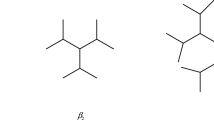Abstract
Symmetries of large networks are used to simplify the specification of a guest-host network relationship. The relevant kinds of symmetries occur not only in Cayley graphs and in group-action graphs, but elsewhere as well. In brief, the critical topological symmetry property of a guest or host is that it is algebraically specifiable as a covering space of a smaller graph. A first objective is to understand the circumstances under which a mapping (a.k.a. “embedding”) between two base graphs can be lifted topologically to a mapping between their respective coverings. A suitable assignment of algebraic elements called “permutation voltages” to a base graph for the intended host network facilitates the construction not only of the intended host, but also of the intended guest and of the intended mapping of the guest into the host. Explicit formulas are derived for measurement of the load, of the congestion, and of the dilation of the lifted mapping. A concluding example suggests how these new formulas open the opportunity to develop optimization methods for algebraically specified guest-host mappings.
Similar content being viewed by others
References
S. Akers and B. Krishnamurthy, A group-theoretic model for symmetric interconnection networks,IEEE Trans. Comput. 38 (1989), 555–566. Previous version inProc. Internat. Conf. on Parallel Processing, 1986, pp. 216–223.
S. R. Alpert and J. L. Gross, Components of branched coverings of current graphs,J. Combin. Theory Ser. B 20 (1976), 283–303.
F. Annexstein, M. Baumslag, and A. L. Rosenberg, Group action graphs and parallel architectures,SIAMJ. Comput. 19 (1990), 544–569.
H. S. M. Coxeter and W. O. J. Moser,Generators and Relations for Discrete Groups, 3rd edition, Springer-Verlag, New York, 1972.
C. L. Ezell, Observations on the construction of covers using permutation voltage assignments,Discrete Math. 28 (1979), 7–20.
R. Feldman and W. Unger, The cube-connected cycles network is a subgraph of the butterfly network,Parallel Process. Lett. 2 (1992), 13–19.
J. P. Fishburn and R. A. Finkel, Quotient networks,IEEE Trans. Comput. 31 (1982), 288–295.
D. S. Greenberg, L. S. Heath, and A. L. Rosenberg, Optimal embeddings of butterfly-like graphs in the hypercube,Math. Systems Theory 23 (1990), 61–77.
J. L. Gross, Voltage graphs,Discrete Math. 9 (1974), 239–246.
J. L. Gross, Every connected regular graph of even degree is a Schreier coset graph,J. Combin. Theory Ser. B 22 (1977), 227–232.
J. L. Gross and S. R. Alpert, Branched coverings of graph imbeddings,Bull. Amer. Math. Soc. 79 (1973), 942–945.
J. L. Gross and S. R. Alpert, The topological theory of current graphs,J. Combin. Theory Ser. B 17 (1974), 218–233.
J. L. Gross and J. Chen, Lifting permutation voltage-graph morphisms, Manuscript, 1993.
J. L. Gross and T. W. Tucker, Quotient graphs: revisiting the Heawood map-coloring problem,Pacific J. Math. 55 (1974), 391–402.
J. L. Gross and T. W. Tucker, Generating all graph coverings by permutation voltage assignments,Discrete Math. 18 (1977), 273–283.
J. L. Gross and T. W. Tucker, Fast computations in voltage graph theory,Ann, New York Acad. Sci. 319 (1979), 254–257.
J. L. Gross and T. W. Tucker,Topological Graph Theory, Wiley-Interscience, New York, 1987.
F. T. Leighton,Introduction to Parallel Algorithms and Architectures, Morgan Kaufmann, Los Altos, CA, 1992.
W. S. Massey,Algebraic Topology: An Introduction, Springer-Verlag, New York, 1967.
Z. Miller, Graph layouts,Applications of Discrete Mathematics (eds. J. G. Michaels and K. H. Rosen), McGraw-Hill, New York, 1991, Chapter 21.
A. L. Rosenberg, Exposing graph uniformities via algebraic specification,Math. Systems Theory 23 (1990), 227–244.
Author information
Authors and Affiliations
Additional information
The first author was partially supported by ONR Contract N00014-85-0768, and the second author was partially supported by NSF Grant CCR-9110824.
Rights and permissions
About this article
Cite this article
Gross, J.L., Chen, J. Algebraic specification of interconnection network relationships by permutation voltage graph mappings. Math. Systems Theory 29, 451–470 (1996). https://doi.org/10.1007/BF01184810
Received:
Revised:
Issue Date:
DOI: https://doi.org/10.1007/BF01184810




